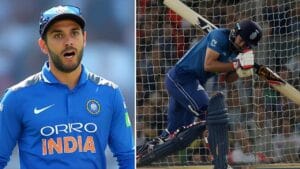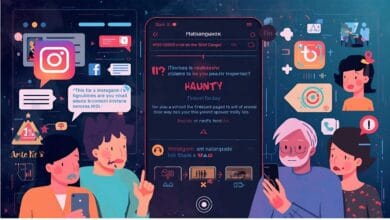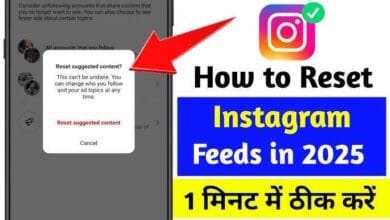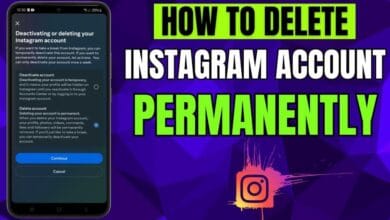
Which Cricketer Fake Followers on Instagram Exposed in Recent Report
Social media has developed into a complete platform for branding, endorsements, and fan interaction in the world of professional cricket, going beyond simple communication. Cricket players, who have millions of fans, frequently compete both online and on the field. However, a recent investigation has caused a stir in the cricket community after it was discovered that a number of elite players may have used bots or fake followers to inflate their Instagram followings.
Discussions concerning sponsorship ethics, authenticity, and managing one’s online reputation have been sparked by this discovery. Which cricket player’s phony Instagram followers were revealed in the most recent report? Let’s get started.
Cricketers With Highest Percentage of Fake Followers

A social media analytics firm recently conducted a digital audit that looked at the Instagram followings of top cricket players. They measured suspicious activity patterns, such as spam comments, bot-like behavior, and fake engagement rates, using sophisticated detection tools.
A synopsis of some of the results is provided below:
| Cricketer | Total Followers | Estimated Fake Followers (%) | Platform Engagement Rate |
| Virat Kohli | 270M+ | 36% | 1.8% |
| MS Dhoni | 45M+ | 33% | 1.2% |
| Rohit Sharma | 35M+ | 31% | 1.5% |
| Hardik Pandya | 25M+ | 29% | 2.0% |
| Babar Azam | 9M+ | 27% | 1.6% |
| David Warner | 10M+ | 26% | 2.1% |
| Ben Stokes | 4M+ | 24% | 1.4% |
These figures show how widespread fake follower issues have become, even for the biggest names in the sport, even though they don’t necessarily demonstrate direct player involvement.
What Are Fake Followers and Why Do They Matter?
In order to artificially increase a user’s follower count, fake followers are typically bots or inactive accounts. A cricket player’s follower count is a useful metric in the sponsorship industry since it frequently translates into better brand deals and increased visibility.
However, credibility can be harmed when brands find that a sizable portion of a player’s audience is fraudulent. Additionally, it skews analytics and marketing campaigns, producing inaccurate ROI estimates.
Furthermore, if fans discover that their favorite athletes are exaggerating their fame for financial benefit, they might feel deceived.
How Are Fake Followers Detected?
It takes more than guesswork to identify phony followers. HypeAuditor, Modash, and IG Audit are just a few of the tools that analysts use to assess:
- Consistency in engagement
- Like-to-follower proportions
- Authenticity of the comment
- Level of profile activity
- Geographic irregularities
These tools offer a reliable way to distinguish between accounts that are inactive or bots and those that are actual followers.
Do Cricketers Buy Followers Themselves?
This is where things become complex. Players frequently might not even be aware that their accounts have phony followers. The accounts are occasionally managed by digital managers or third-party PR teams, who may employ aggressive growth strategies like “follower exchange” networks or paid bots.
However, some influencers, including celebrities, do purposefully purchase phony followers in order to stay competitive or land major brand deals. Without evidence, it’s difficult to determine who does what, but the growing issue of fake followers indicates that the practice is far from uncommon.
Impact on Endorsement Deals
Spending millions, brands and advertisers collaborate with athletes who have the ability to sway sizable audiences. However, what occurs if almost one-third of that audience is fraudulent?
- Reduced campaign return on investment
- Decline in influencer and brand trust
- Potential cancellations or reviews of contracts
Before making deals, some international brands now demand influencer audits. Regardless of a player’s skill on the field, a high number of fake followers could harm their financial prospects in this environment.
Public and Fan Reactions
Reactions were mixed when the news broke about which cricketer had been found to have fake Instagram followers. While some fans voiced their dissatisfaction, others stood up for their heroes, claiming that the problem affects celebrities in all fields, not just cricket players.
Social media has evolved into a stage for performances, and like any stage, there is pressure to “look successful.” In cricket as well as in movies, fashion, and business, this pressure frequently pushes people to use artificial enhancements.
What Can Be Done Moving Forward?

Several actions can be taken to address this growing problem:
- Influencer account audits by third parties on a regular basis
- Greater openness from Instagram and other social media sites
- Teaching athletes about digital ethics
- Sports boards’ regulations to guarantee equitable digital practices
Athletes are already receiving guidelines from some agencies about what is and is not acceptable when it comes to increasing their social media presence.
Final Thoughts
Cricket players are constantly under pressure to maintain large follower counts and high engagement in a time when having a strong online presence equates to power. However, this report shows that statistics can be misleading. The existence of phony Instagram followers has demonstrated that dubious social media strategies can affect even the most well-known celebrities.
Q&A Section – Frequently Asked Questions
Q1: Which cricket players’ phony Instagram followings were revealed in the report?
A: It was discovered that cricket players Rohit Sharma, MS Dhoni, and Virat Kohli had a sizable number of phony fans.
Q2: Is it unlawful to have phony followers?
A: No, they are not against the law, but using them dishonestly may be against brand agreements and platform policies.
Q3: Do gamers purchase their own phony followers?
A: Not all the time. Promotions and growth strategies are occasionally managed by the agencies that manage their profiles.
Q4: How can we determine whether a cricket player has phony fans?
A: To estimate the percentage of phony followers, tools such as Modash or HypeAuditor can examine account metrics.
Q5: What causes cricket players to have phony fans?
A: To increase online visibility, draw in sponsors, or as a result of outside growth tactics.
Q6: Can their career be impacted by having phony followers?
A: Absolutely, particularly with regard to endorsements, digital reputation, and brand trust.
Q7: How is the number of phony followers being decreased?
A: Stricter brand requirements, enhanced platform detection, and audits are all being put into place.





